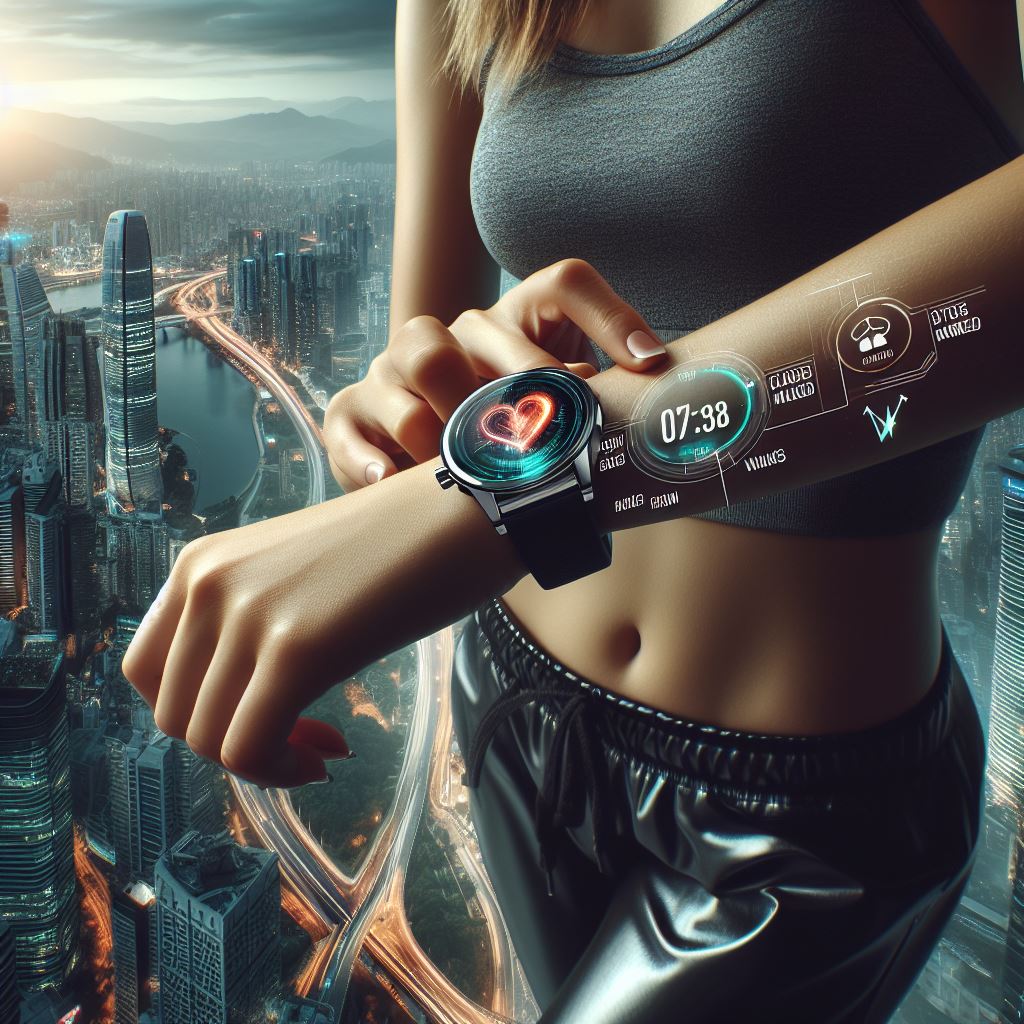
Wearable technology has experienced a remarkable surge in popularity within women’s fashion over recent years, transforming accessories and garments into interactive pieces that cater to both style and health. The development of sleek fitness trackers and sophisticated smartwatches has been pivotal in encouraging women to take an active role in monitoring their well-being while ensuring these gadgets complement their personal style narratives. These devices have become essential tools for managing daily activities, making it easier to track physical activity levels, monitor heart rates, and stay connected through notifications without compromising on elegance or femininity.
Wearable technology is expanding its influence through the creation of smart jewelry. Rings, bracelets, and necklaces are being equipped with the capabilities to alert the wearer to phone notifications, control connected devices, and even monitor UV exposure. These ornamental yet functional pieces distinguish themselves by delivering the convenience of technology through the subtlety of fine jewelry, serving as a beacon of innovation in women’s fashion.
Weaving Functionality into the Fabric of Fashion
The textile industry is undergoing a technological metamorphosis, with smart textiles at the forefront. These innovative fabrics are embedded with digital components or developed using conductive materials that allow for sensing, illumination, or even heating elements to be woven directly into the textile. This transformative approach to fabric design introduces new levels of interactivity and adaptive functionality.
Smart textiles are revolutionizing women’s fashion by enabling clothing to respond to external stimuli, such as changes in temperature, to modify their properties accordingly. This can translate into a dress that adjusts its opacity based on sunlight exposure, or a jacket that heats up in response to a drop in ambient temperature. Athleisure wear infused with such smart fabrics can now wick away sweat more efficiently or provide better compression based on the movement of the body. By doing so, these textiles merge high-performance with high-fashion, redefining expectations for the modern, tech-savvy woman.
Tech Accessories
 Tech accessories have transformed from mere embellishments into central components of the fashion tech conversation. These accessories are not simply passive adornments but interactive devices that enhance the user experience while remaining true to fashion-forward design principles. Designers and tech companies alike are realizing the potential for accessories to serve as platforms for personal tech, giving rise to an array of innovative products.
Tech accessories have transformed from mere embellishments into central components of the fashion tech conversation. These accessories are not simply passive adornments but interactive devices that enhance the user experience while remaining true to fashion-forward design principles. Designers and tech companies alike are realizing the potential for accessories to serve as platforms for personal tech, giving rise to an array of innovative products.
Among these, smartphone cases stand out as a prime example of fashion tech blend. No longer just protective casings, they are becoming more sophisticated, with built-in batteries, wallets, or even makeup compacts, allowing women to reduce the items they need to carry for everyday convenience. Similarly, bags and purses are incorporating built-in chargers or GPS tracking, offering women peace of mind alongside high-tech elegance. Additionally, eyewear is undergoing transformation with augmented reality capabilities, providing real-time information overlays and hands-free connectivity while maintaining a fashion-forward appearance.
What’s more, the rise of additive manufacturing, commonly known as 3D printing, paves the way for custom-made accessories on demand. The ability to produce bespoke items that cater to an individual’s style and functional requirements signifies an unprecedented level of personalization in women’s fashion. With 3D printing capabilities, designers are able to experiment with intricate geometries and complex structures that were once impossible to achieve, enabling the creation of truly unique, statement-making accessories that embody the fusion of tech and aesthetic appeal.
Sustainability and Ethics in Fashion Tech
As we embrace the breathtaking innovations of fashion tech, it’s critical to discuss the sustainability and ethical implications of these advancements. The enthusiastic adoption of technology in fashion paves the way for greener manufacturing processes, the reduction of waste, and the ability to repurpose materials, contributing towards a more sustainable industry.
Smart textiles offer significant potential for reducing environmental impact, with fabrics designed to last longer, self-clean, or change color without the need for toxic dyes. With an emphasis on eco-friendly processes, these advancements can lead to a substantial decrease in water usage and chemical disposal, alleviating some of the traditional textile industry’s burden on the planet.
In parallel, wearable technology can foster more thoughtful consumption by promoting quality over quantity. High-tech garments and accessories that incorporate multiple functionalities can reduce the need for excessive consumer goods. A single piece of smart jewelry that serves various purposes or a piece of clothing that adapts to different temperatures can effectively replace multiple traditional items.
Ethical considerations surrounding the production of these items must be taken into account. It is imperative to ensure that the materials and processes involved in the creation of tech-infused fashion are responsibly sourced and managed. This includes the ethical treatment of workers throughout the supply chain and the proper handling of data collected through smart garments and accessories, championing privacy and security for the end-users.
Empowerment Through Innovation
The convergence of technology and women’s fashion empowers wearers by providing new avenues for personal utility and expression. This empowerment comes in many forms, from the increased engagement with personal health and well-being facilitated by wearable technology to the enhanced expression and functionality provided by smart textiles and tech accessories.
As these technologies advance, they offer more than just convenience; they provide a platform for women to navigate their daily lives with greater efficiency, confidence, and autonomy. The innovative combinations of aesthetic and functionality address the dynamic needs and lifestyles of women today, making fashion an active participant in the digital age rather than a passive observer.
Embracing the Future of Fashion Tech
The intersection of technology and fashion is a fertile ground for nurturing inclusivity, innovation, and personalization in women’s fashion. As we continue to witness advancements in wearable technology, smart textiles, and high-tech accessories, the potential for these innovations to transform everyday life is vast.
As this field continues to expand and evolve, we can expect to see even more imaginative integration of tech within fashion. From garments that adapt to our physical and emotional states to accessories that seamlessly integrate with our digital lives, the future of fashion tech holds exciting prospects. With each new development, we edge closer to a world where the clothes we wear and the accessories we choose serve to empower and inspire.
The union of technology and fashion marks a significant shift in how we perceive and experience personal style. The advancements in wearable technology, smart textiles, and high-tech accessories are paving the way for a future where fashion actively enhances the quality of life for women.
